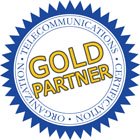Low-Power Wide-Area (LPWA) systems, also called Low-Power Wide-Area Networks (LPWANs) are wireless systems for sensor data reporting and remote control.
There are four main technologies, divided into two groups: technologies deployed by mobile (cellular) carriers, and technologies deployed by non-cellular carriers.
The technologies deployed by cellular operators are Narrowband Internet of Things (NB-IoT) and Long Term Evolution category M1 (LTE-M).
The technologies deployed by non-cellular operators are sigfox and LoRa (short for Long Range).
Sigfox and LoRa operate in unlicensed spectrum often called Industrial, Scientific and Medical (ISM) bands, at relatively low frequencies. In Europe the 868-MHz band is used; in the US it is 915 MHz; and 923 or 433 MHz in Asia.
Sigfox is a French company that established a base of customers with water meters from the French water authority Veolia and has expanded internationally.
It provides the leanest communication service, using 100 Hz of bandwidth to move tiny data packets with payloads of 12 bytes upload and 8 bytes download, with limits on the number of messages per day. The theoretical data rate is 600 bits per second. This reduces the subscription costs and extends battery life. It can support 1 million devices per base station transceiver.
LoRa is a competing technology also using ISM bands, using 125 kHz of bandwidth to achieve a theoretical 50 kb/s and 40,000 devices per base station. LoRa employs spread-spectrum coding, meaning the modem signal is spread over a wider frequency band than normal. This allows better performance in the presence of noise or jamming. The LoRa Alliance was created to foster interoperability between devices.
Cellular carriers offer NB-IoT and LTE-M wireless services in licensed frequency bands.
NB-IoT operates on 200 kHz channels, often in the "guard bands", i.e. unused spectrum between bands used for conventional cellular, supporting around 200 kb/s data rates depending on carrier implementation.
It is designed for fixed, ultra-narrow-bandwidth IoT applications. It purports to provide better connectivity in subterranean locations such as basements, utility vaults and sensors located deep within buildings. It does not support mobility, i.e. maintaining connection as the sensor moves out of range of a base station.
LTE-M operates on approximately 1 MHz bands on licensed spectrum, supporting up to 1 Mb/s data rates (depending on carrier implementation), as well as voice and mobility.
As the name would suggest, it is intended for existing LTE cellular networks, to provide extended coverage to IoT applications.
Due to its lower latency and higher bandwidth than NB-IoT, LTE-M is suited for IoT applications where devices are in motion and real-time data is required.
The sigfox and LoRa systems gained an early market share. Carrier NB-IoT and LTE-M systems are expected to significantly outpace sigfox and LoRa in terms of connected devices going forward.









